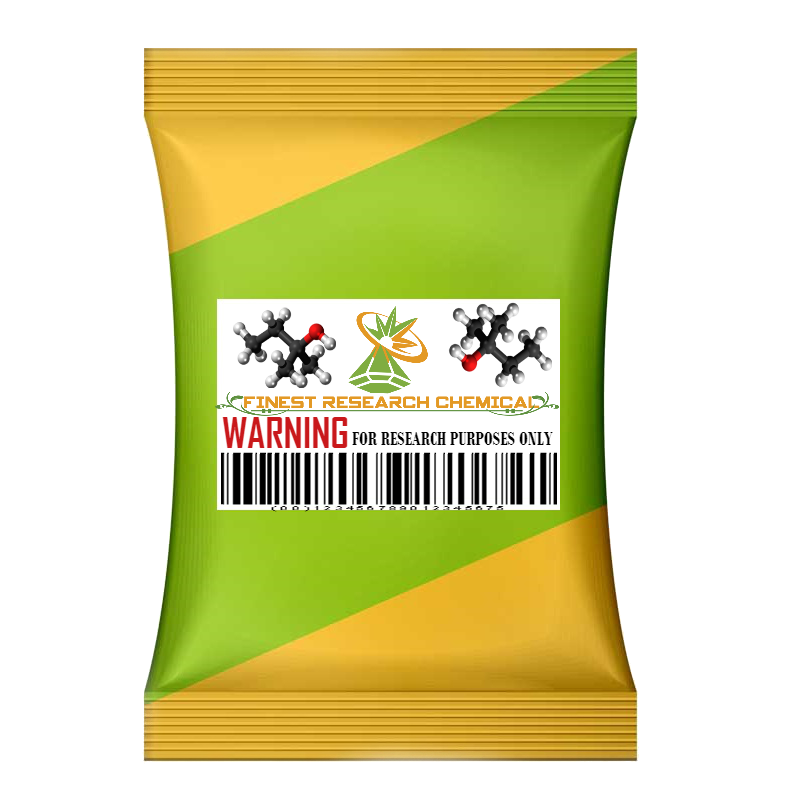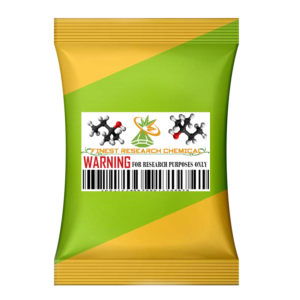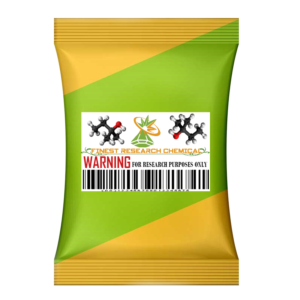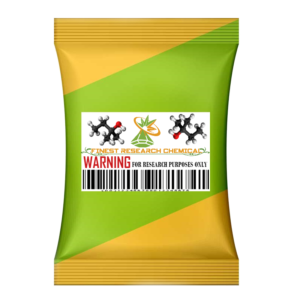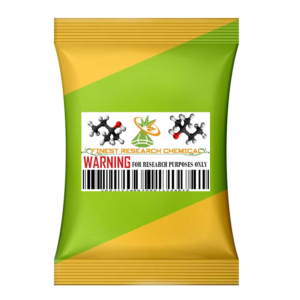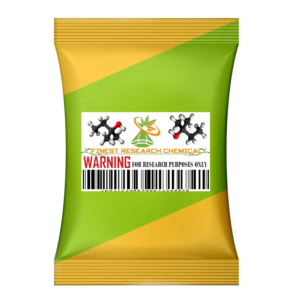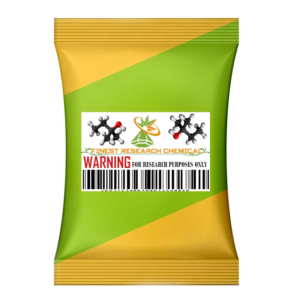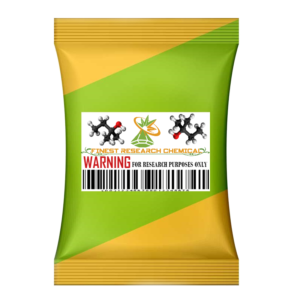Description
PENTEDRONE
Pentedrone, also known as α-methylamino-valerophenone, is a stimulant drug compound of the sunstituted cathinone class. It has a history of recorded use since first being identified as a legal high in 2010.
It goes by the systematic and formal IUPAC name (RS)-1-phenyl-2-(methylamino)pentan-1-one. Pentedrone hydrochloride forms a white powder at room temperature and pressure. It has a molar mass of 191.27 grams and molecular formula C12H17NO. The hydrochloride salt has a melting point of 176.8 oC and molar mass of 227.73 grams.
The chemical exerts its stimulant effect by acting as a noradrenaline-dopamine reuptake inhibitor. It does not cause the release of these neurochemicals. This pharmacological action is similar to methylphenidate.
Pentedrone has been shown to exhibit rewarding properties in rats which is in keeping with its dopamenergic activity. It has been shown to up-regulate mRNA expression of the dopamine 1 receptor, dopamine 2 receptor and dopamine transporter proteins in rats. Such up-regulation is a sign of over stimulation of the dopaminergic pathway, and is a key homeostatic action of the body to self regulate.
At 3 and 10 mg/ Kg pentedrone has been shown to increase conditioned place preference in mice. This result is a demonstration of its rewarding properties. It has also been shown to significantly increase the rate of self administration in rats with a 0.3/ mg/ kg infusion. Acute administration of pentedrone in rats increases locomotor activity in a dose dependent manner.
The toxicological profile of pentedrone in humans is unknown. The health effects of long term and even short term recreational use have not been investigated.
The chemical is not for human or animal consumption.
Unverifiable online reports give us some indication of the effects of this compound.
Reports of use generally outline a number of positive effects of the chemical. It is said to produce feelings of euphoria, mental and physical stimulation, increased focus, mental clarity and increased productivity.
Neutral reported effects include loss of appetite and some distortions in the visual field.
Negative effects which have been reported from pentedrone use include feelings of anxiety, paranoia, acute agitation, palpitations of the heart and abnormal heart beat, increased heart rate, clenching of the jaw and cold extremities of the body.
Pentedrone, if consumed at high doses or for prolonged periods of time, can induce psychosis. This is a phenomenon known as stimulant psychosis. Symptoms include hallucinations, delusions and disordered thinking.
Pentedrone has been linked to one death where it was consumed in combination with another cathinone α-PVP. The individual died from heart failure.
It is dangerous to combine pentedrone with Tramadol as this may increase the risk of seizure. People taking prescription MAOI antidepressants should avoid pentedrone and other stimulants as this combination may result in a hypertensive crisis.
It is considered unsafe to combine pentedrone with the psychedelic stimulants of the DOx series and NBOMe series. It is unsafe to combine with DXM as both compounds increase heart rate.
Pentedrone is considered mildly addictive with a high potential for abuse.
It has been reported as being irritating to the mucous membranes.
Other names and synonyms:
Pentanone, 2-(methylamino)-1-phenyl- [ACD/Index Name]
2-(Methylamino)-1-phenyl-1-pentanon [German] [ACD/IUPAC Name]
2-(Methylamino)-1-phenyl-1-pentanone [ACD/IUPAC Name]
2-(Méthylamino)-1-phényl-1-pentanone [French] [ACD/IUPAC Name]
Pentedrone [Wiki]
2-(methylamino)-1-phenylpentan-1-one
879722-57-3 [RN]
α-methylaminovalerophenone
α-methylamino-valerophenone
879669-95-1 [RN]
MFCD20663738
